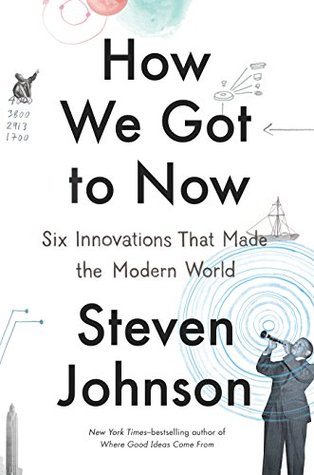More on this book
Community
Kindle Notes & Highlights
Read between
October 30 - November 2, 2023
each leap forward in our ability to measure time has involved a handoff from one discipline to another. The shift from sundials to pendulum clocks relied on a shift from astronomy to dynamics, the physics of motion. The next revolution in time would depend on electromechanics.
THE STRANGE THING about the electric lightbulb is that it has come to be synonymous with the “genius” theory of innovation—the single inventor inventing a single thing, in a moment of sudden inspiration—while the true story behind its creation actually makes the case for a completely different explanatory framework: the network/systems model of innovation.
Edison invented the lightbulb the way Steve Jobs invented the MP3 player: he wasn’t the first, but he was the first to make something that took off in the marketplace.
Edison didn’t just invent technology; he invented an entire system for inventing, a system that would come to dominate twentieth-century industry.
His greatest achievement may have been the way he figured out how to make teams creative: assembling diverse skills in a work environment that valued experimentation and accepted failure, incentivizing the group with financial rewards that were aligned with the overall success of the organization, and building on ideas that originated elsewhere.
A lightbulb on its own is a curiosity piece, something to dazzle reporters with. What Edison and the muckers created was much bigger than that: a network of multiple innovations, all linked together to make the magic of electric light safe and affordable.
the history of Blitzlicht reminds us that ideas always travel in networks. They come into being through networks of collaboration, and once unleashed on the world, they set into motion changes that are rarely confined to single disciplines. One century’s attempt to invent flash photography transformed the lives of millions of city dwellers in the next century.
It was virtually inevitable that someone would invent flash photography in the nineteenth century. (The simple fact that it was invented multiple times shows us that the time was ripe for the idea.)
The march of technology expands the space of possibility around us, but how we explore that space is up to us.
Think about these different strands: the atoms of a rare gas, unnoticed until 1898; a scientist and engineer tinkering with the waste product from his “liquid air”; an enterprising sign designer; and a city blooming implausibly in the desert. All these strands somehow converged to make Learning from Las Vegas—a book that architects and urban planners would study and debate for decades—even imaginable as an argument.
IDEAS TRICKLE OUT OF SCIENCE, into the flow of commerce, where they drift into the less predictable eddies of art and philosophy. But sometimes they venture upstream: from aesthetic speculation into hard science.
Without bar-code scanning, the modern shopping landscape of Target and Best Buy and supermarkets the size of airport terminals would have had a much harder time coming into being. If there was a death ray in the history of the laser, it was the metaphoric one directed at the mom-and-pop, indie stores demolished by the big-box revolution.
If there is a common thread to the time travelers, beyond the nonexplanation of genius, it is this: they worked at the margins of their official fields, or at the intersection point between very different disciplines.


